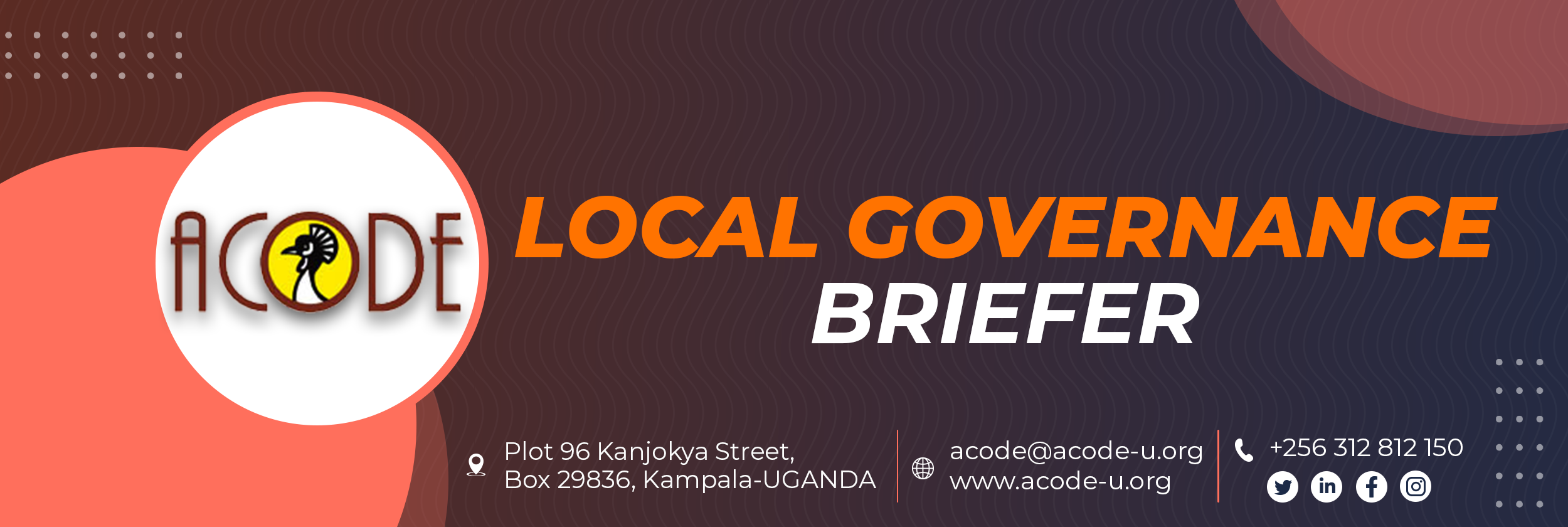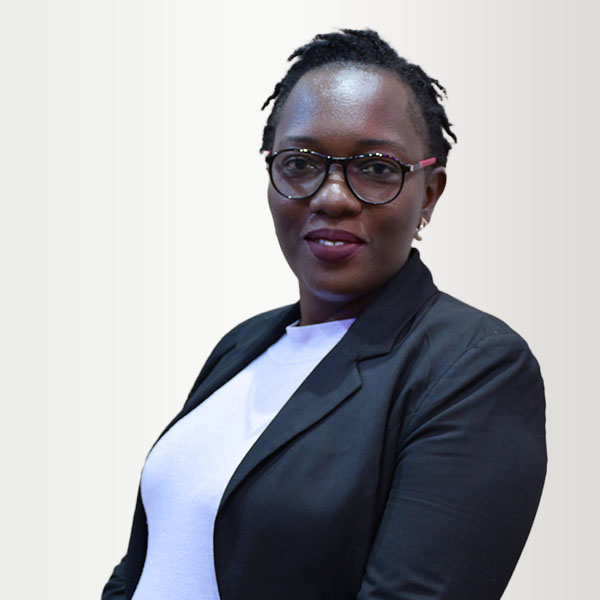|
Is this email not displaying correctly? Click here to view in browser Issue 07 | March 2023 |

|
Harnessing community participation for inclusive disaster management in Uganda By Rebecca Nalwoga-Mukwaya, Research Officer, ACODE
By Rebecca Nalwoga-Mukwaya, Research Officer, ACODE
In the recent past, Uganda has grappled with several disasters such as pandemics (Ebola and COVID-19) and natural disasters such as drought, famine, flooding, mudslides and landslides among others. Most certainly, disasters call for emergency response modes but this should not negate the invaluable contribution of communities in the country. Community participation and citizen engagement are fundamental principles of inclusive disaster risk management (DRM) for more sustainable and resilient outcomes. Community-organized DRM efforts work best in communities amidst the multitude of vulnerabilities if they take a bottom-up approach. Encouraging community participation throughout the DRM project cycle helps to establish trust and collaboration among many stakeholders, which leads to better development outcomes and more sustainable solutions.1 This article elucidates the necessity for communities to be involved in disaster management to amplify concepts of voice and accountability in disaster governance at local government levels in Uganda. BackgroundAfrica holds half of the world’s disaster risk-prone countries and is experiencing an increasing number of disasters due to climate change, poorly planned urbanization, environmental degradation, poverty and inequality, fragility and conflict.2 With a risk index of 5.9, Uganda is considered one of the high disaster-risk countries in the world (Ref). Although Uganda has a medium hazard and exposure index of 5.0, its vulnerability (6.0) and lack of coping capacity (6.9) indices are high3. Uganda faces several disasters including floods, mudslides, hunger, diseases like Ebola among many others. In 2022, 92,444 individuals were affected by disasters, representing 19,079 households. A total of 13,451 individuals representing 4,170 households have been internally displaced4. The primary responsibility of disaster management in Uganda rests on the citizens and the government plays a supportive role5. Disasters are considered to be a local phenomenon because local communities are on the frontlines of both the immediate impact of a disaster and the initial emergency response to a disaster6. However, the disaster management responses adopted in Uganda often posit a top-down approach with a top-to-bottom expert mentality. Community participationThere are various definitions of community participation but overall, it’s the involvement of communities in all aspects of the project cycle. True participation means the involvement of the people concerned in analysis, decision-making, planning, and programme implementation, as well as in all the activities, from search and rescue to reconstruction, that people affected by disasters undertake spontaneously without the involvement of external agencies7. As such community, participation should be that which is done with them and not for them lest we treat them as objects. Communities are often times the first responders in the aftermath of a disaster. Empowering the communities and promoting local participation gives the community control of the processes and allows it to take care of its rebuilding. The ideas and wisdom of community to assist shape the process through empowered decision-making with the government and other authorities8 According to the UNDP,9 community participation helps to improve the delivery and quality of recovery services, increase social inclusion, and to provide greater openness and accountability. In addition, key established benefits of community participation in recovery and development processes include: bringing together disparate stakeholders around the a similar cause and procedure; improving decision-making; enhancing participation; and improving the inclusion of frequently marginalized populations. Community participation enhances the validity of the rehabilitation process as well as builds on local human and material resources. It has been commended for encouraging collaboration among communities, local governments, and civil society organizations (CSOs). Furthermore, it has been observed that project outputs are more tailored to local needs, and the impacts are more long-lasting with the active involvement of the beneficiary community. This further enhances need for local ownership of the disaster recovery process, consequently ensuring that outcomes are harevested. This participation has been lauded for enhancing public sector accountability as a result of downward and upward constructive engagements. It prepares communities to respond more effectively to better respond to future disasters because they have experience and relationships with decision-makers. Furthermore, community participation offers a case for legitimacy in policymaking and implementation and creates a shared understanding and ownership of hazards, risks, and vulnerabilities. Scholars have noted that community inclusiveness in planning, decentralised decision-making, and transparency in funding allocation set the foundation for longer-term community ownership in reconstruction.10 Disasters are times in which the exclusion of communities or groups can be magnified. Disaster management is a four-step cycle which involves; prevention and mitigation; preparedness, response, and recovery (rehabilitation and reconstruction). The major areas in which community participation should be happen include knowledge management, planning and policy development. Key policy issuesUganda’s Disaster Preparedness and Management Policy 2011 places the role of disaster management in the hands of the community and the role of government is supportive. Despite this, the Policy only mentions some roles of the community and not how the community should take charge of disaster management. Most of the interventions it mentions are ‘done for the people’ but not ‘with the people’11. Relatedly, dissemination of the destatster management policy by the government appears to be largely lacking. By and larger, local communities in local governments as well as leadersips of local govenments are not aware of such good policies which would be very influential in managing disasters. Incidentally, the primary responsibility for disaster risk management rests with the citizens12. The Disaster Preparedness and Management Policy provides for structures right from the Central Government to the Local Governments, cascading down to the village level. The role of communities is more prominent in the Village disaster technical committee. However, the study of the District Task Forces noted that the Disaster committees or sub-committees were not functional and in most districts had not yet been composed or trained.13 Any system of local planning and protection must be integrated into larger administrative and resource capabilities such as provincial, state and national disaster plans and risk reduction strategies. It is equally important to realize that communities cannot implement community-based disaster mitigation alone.14 While Uganda has made commendable progress in policy development for disaster management, there has not been active participation of local communities in policy formulation processes. Policy development must be done together with the communities because policies directly affect them. This means holding consultative meetings and continuously reviewing them so that they are updated with the issues being faced by the communities. Even though the communities may be facing the same disaster, the manifestations over time change. While people should own the problems, consequences and challenges of any mitigation and/or preparedness initiative, it is necessary to see people’s involvement from a broader perspective, which is related to policy and strategy.15 Role of local governmentsOne of the functions of local governments according to section 35 of the Local Government Act Cap 243 is planning and this indeed involves the community. Public participation in DRR ensures shared responsibility and transparency in DRR planning and implementation. In 2010, Bududa landslide victims were relocated to Kiryandongo in Western Uganda. This meant different social, cultural and economic settings. Bududa is a highland with very fertile soils and people were dependent on agriculture. When they were relocated to the Kiryandongo district, the area had lowlands moreover with infertile soils. The people of Bududa are Bagisu who have a yearly initiation ceremony for young men called “imbalu” (circumcision). It is normally done with other cultural ceremonies which are quite different from those found in Kiryandongo. This made them cultural misfits in their communities and with time, most of the relocated people returned to Bududa. The government while relocating this community did not consult them on the area to which they were going to be taken. ConclusionsThe bottom-up approach of participation of communities in disasters should be evident in the structures, planning, knowledge development and policy development because it is of utmost importance that the community is involved to enable it to recover, and also mitigate future risks. Engaging communities creates a shared understanding and ownership of hazards, risks, and vulnerabilities. Scholars have noted that community inclusiveness in planning, decentralised decision-making, and transparency in funding allocation set the foundation for longer-term community ownership in reconstruction. Recommendations
Endnotes
|
|
© 2023 Advocates Coalition for Development & Environment. All Rights Reserved
Plot 96, Kanjokya Street. Box 29836, Kampala-UGANDA
|
|
Not wanting to receive these emails? You can unsubscribe here |